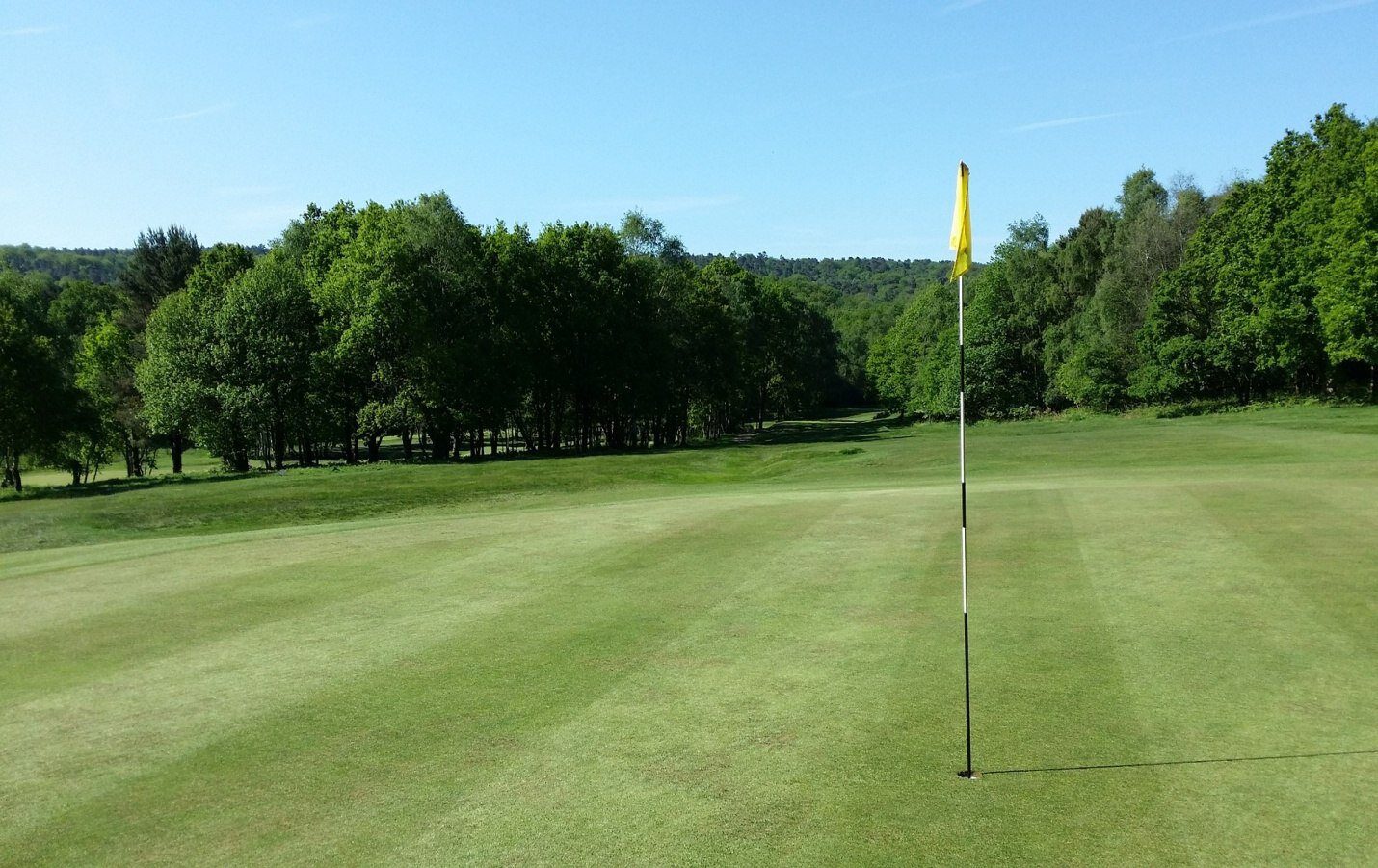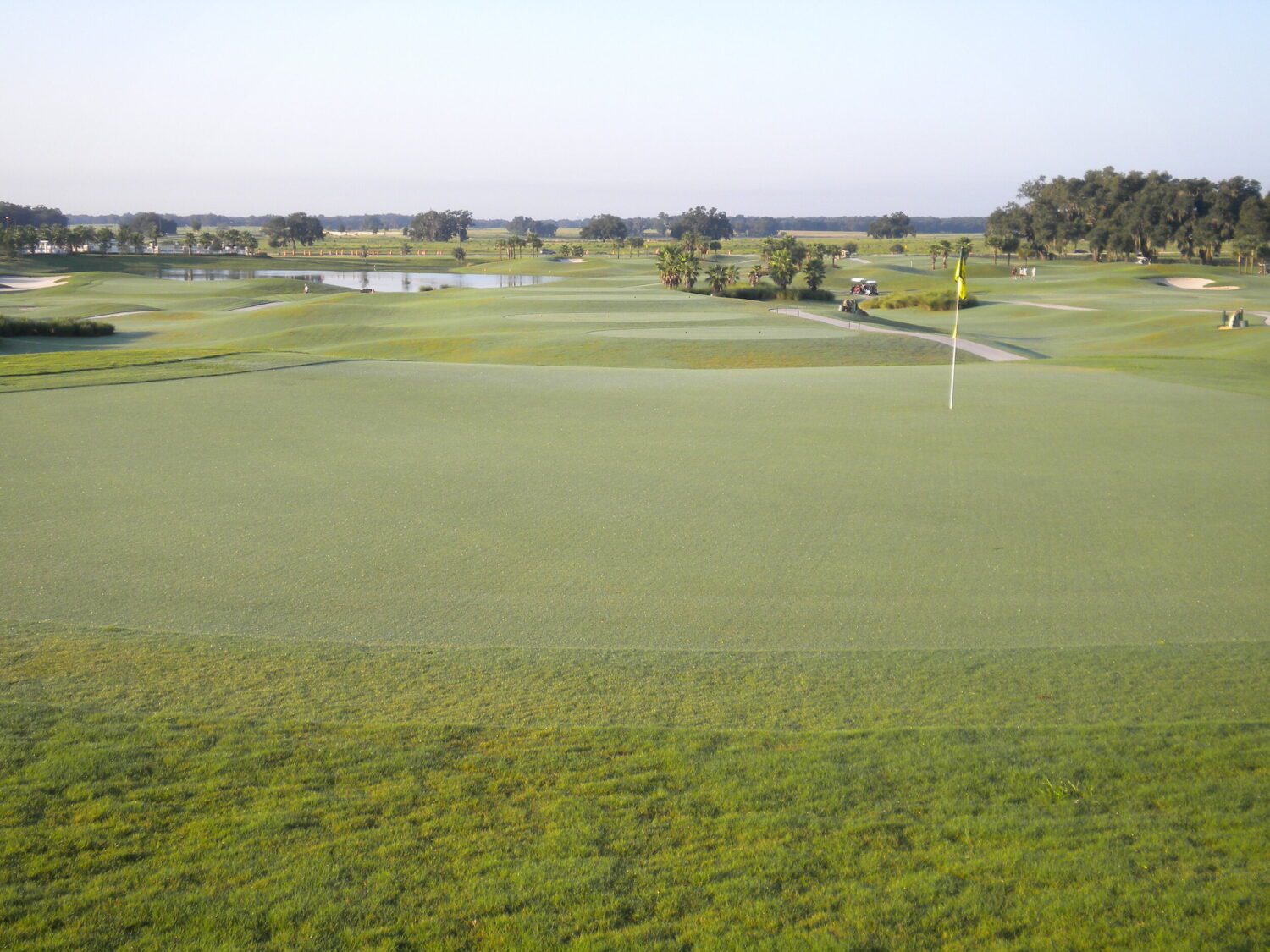As the game of golf evolves, so does the maintenance equipment used to maintain the courses! Today a variety of mower types are available, with differing benefits and associated costs.
Reel Mowers
Reel mowers feature blades connected to a cylinder called a reel. As the cylinder starts to rotate, grass leaves are propelled against a stationary, sharp knife and clipped. A reel mower that is correctly adjusted cuts grass as neatly as a sharp pair of scissors and offers better-quality results compared to other mower types.
Reel mowers also consume less fuel, need less power, and, therefore, are more productive to operate than flail or rotary mowers. As a matter of fact, when used at the same mowing speed, reel mowers consume up to 50% less fuel per acre of cut compared to rotary mowers.
Reel mowers do have several drawbacks, most remarkably they are not able to cut coarse-textured turf and mow grass maintained above nearly 1.5 inches. Likewise, weeds, tall seed heads, and firm seed stalks are not cut effectively with reel mowers. Reel mowers, especially which are driven hydraulically, are more costly than other mowers and often need a greater level of skill and maintenance to operate and adjust.
Rotary Mowers
A rotary mower can be called an impact-type cutting mower. They consist of blades that are mounted at right angles that trim grass at a high speed. To get the best results, you must maintain rotary mowers with a balanced, sharp blade. Rotary mowers cut grass similar to a knife. A mower blade that is dull just shreds leaf blades rather than cutting them which makes leaf tips become frayed and jagged. When a rotary blade that is not sharpened tears up the leaf tissue, wounds heal gradually, and more water losses happen through evaporation as the vascular tissue unprotected from the environment is increased. Torn tissue also causes entry points for diseases. This can increase the requirement for fertilizers or pesticides. If blades are scraped from hitting hard objects, they should be filed or ground to restore the initial cutting edges.
Rotary mowers have the benefit of being more versatile and relatively low-cost than reel mowers. They can be used to cut very coarse-textured or tall grass, seed stalks, and tough weeds. Rotary mowers can also reduce herbicide use in golf courses by making weed seed heads less prominent. They also can be more effortlessly maneuvered than reel mowers to prune around buildings and trees, and typically have lesser initial costs and easier maintenance requirements.
One drawback of rotary mowers is they are not able to give a quality cut at heights of less than one inch. They are not often designed to stick to the surface contour the same as the reel mower. For this reason, the rotary mower is more likely to scalp turf at close mowing heights as it goes through small ridges or mounds that usually consist of the turf surface. Rotary mowers can also cause harm if feet or hands are accidentally placed below the mowing deck when the blade is operating. Since the blades rotate at a high speed, they can turn any tree limbs or rocks that they come across into harmful projectiles.
Flail Mowers
Flail mowers are impact-type cutting mowers, which have several small blades. The knives continue moving by centrifugal force. In flail mowers, cut debris is cut again and again until it is little enough to get free from the close clearance.
The benefits of flail mowers include their capability to cut tall grass into nicely ground mulch and the capability of every blade to draw back upon heavy/buried objects or impacting rocks without causing harm to the mower. In contrast to rotary mowers, they do not make dangerous projectiles if they come across hard objects like a tree limb or rock.
The drawbacks include the flail mower’s incapability to offer a high-quality, close cut and the trouble of sharpening the numerous, small blades. Flail mowers are mostly used on low-maintenance utility turfgrasses, like out-of-play areas or roughs, that are not mowed frequently and do have a high aesthetic requirement.
Equipment Care
Equipment care is almost as essential as initially selecting the correct mower. Routine maintenance like oil changes, tune-ups, blade sharpening, belt adjustments, and correct cleaning is essential in lowering operating costs and increasing the useful life of mowing equipment. Accurate records require to be observed and maintained to help determine the costs of operation and to account for the purchase of new equipment. Additionally, appropriate storage must be available to prevent accidents, reduce the exposure of equipment to weather, and maintain security. When a job is completed, the unit must be wiped and stored in a dry, clean, and secure area.
DTE Golf® offers quality golf course maintenance services. Contact us today for more information.




